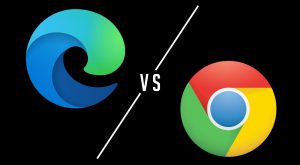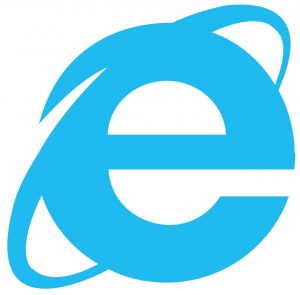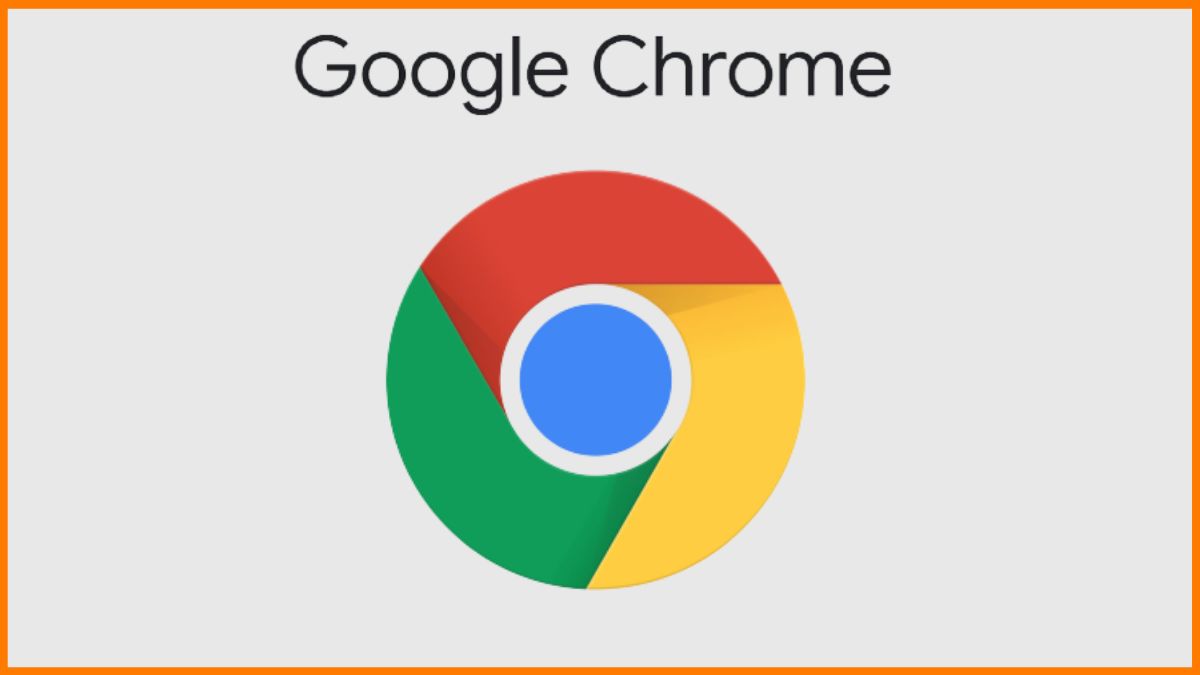Introduction
When it comes to web browsing, the choices seem endless. Among the myriad of options, two names stand out: Chromium and Chrome. These two browsers are often mentioned in the same breath, leading to confusion about their differences and similarities. In this article, we will delve into the intricacies of Chromium and Chrome, shedding light on their unique features, origins, and functionalities.
Chromium and Chrome are closely related, yet they serve distinct purposes in the digital realm. Understanding their individual characteristics is crucial for users seeking the most suitable browsing experience for their needs. Whether you are a tech enthusiast, a casual internet user, or a business professional, grasping the nuances between these two browsers can empower you to make informed decisions about your online activities.
As we embark on this exploration, we will unravel the history of both browsers, uncovering the events and innovations that shaped their evolution. We will also dissect the key differences and similarities between Chromium and Chrome, providing a comprehensive comparison to demystify their functionalities. Additionally, we will delve into performance and security aspects, offering insights into how these browsers stack up against each other in these critical areas.
Furthermore, we will delve into the customization options and unique features that set Chromium and Chrome apart, allowing users to tailor their browsing experiences to their preferences. By the end of this journey, you will be equipped with the knowledge to discern which browser aligns with your specific requirements, whether it's speed, security, or flexibility.
So, join us as we unravel the intricacies of Chromium and Chrome, empowering you to navigate the digital landscape with confidence and clarity. Let's embark on this enlightening journey to demystify the world of web browsing and make informed choices that resonate with your unique needs and preferences.
History of Chromium Browser
The history of the Chromium browser traces back to 2008 when Google released the Chromium project as an open-source initiative. This move aimed to foster collaboration and innovation within the web development community. The project's primary objective was to create a robust, open-source web browser that could serve as the foundation for various browsers, including Google Chrome.
The development of Chromium was rooted in the desire to provide a platform for web developers to experiment with new features and contribute to the evolution of web browsing. By making the source code accessible to the public, Google aimed to encourage transparency and collaboration, inviting developers worldwide to participate in refining the browser's capabilities.
The Chromium project's inception marked a significant shift in the web browsing landscape, as it introduced a new paradigm of open collaboration and innovation. This approach empowered developers to explore novel ideas, experiment with cutting-edge technologies, and contribute to the continuous enhancement of the browsing experience.
Over the years, the Chromium project has evolved into a thriving ecosystem, attracting a diverse community of developers, engineers, and enthusiasts passionate about shaping the future of web browsing. This collaborative spirit has led to the emergence of a vibrant developer community dedicated to refining the Chromium browser and exploring new frontiers in web technology.
As the Chromium project gained momentum, it became the cornerstone for various web browsers, including Google Chrome. The shared codebase and collaborative ethos of the Chromium project have facilitated the development of a diverse array of browsers, each catering to distinct user preferences and requirements.
The history of the Chromium browser is a testament to the power of open-source collaboration and the transformative impact it can have on the digital landscape. By fostering a culture of openness, innovation, and inclusivity, the Chromium project has not only shaped the evolution of web browsing but also inspired a new era of community-driven development in the technology domain.
In essence, the history of the Chromium browser is a compelling narrative of collaboration, innovation, and empowerment, underscoring the profound impact of open-source initiatives in shaping the digital experiences of millions of users worldwide.
History of Google Chrome
In September 2008, Google unveiled its groundbreaking web browser, Google Chrome, marking a pivotal moment in the evolution of internet browsing. The launch of Chrome represented Google's foray into the browser market, aiming to provide users with a fast, secure, and intuitive browsing experience. The development of Chrome was underpinned by Google's commitment to innovation and user-centric design, setting the stage for a new era in web browsing.
Google Chrome was introduced as a response to the growing demand for a browser that could deliver exceptional speed, stability, and security. Leveraging the open-source Chromium project as its foundation, Chrome was engineered to embody Google's core principles of simplicity, efficiency, and performance. The browser's minimalist interface and streamlined design reflected Google's emphasis on user experience, offering a clean canvas for seamless navigation and content consumption.
One of the defining features of Google Chrome was its advanced rendering engine, which prioritized rendering speed and adherence to web standards. This engine, known as Blink, was developed to optimize the display of web content, ensuring swift loading times and smooth browsing performance. Additionally, Chrome's robust security architecture, including sandboxing and automatic updates, set new benchmarks for safeguarding users against online threats and vulnerabilities.
The introduction of Google Chrome sparked a paradigm shift in the browser landscape, prompting competitors to reevaluate their offerings and prioritize performance and security. Chrome's rapid adoption by users worldwide underscored its appeal, as it swiftly gained traction as a leading choice for internet browsing across diverse demographics.
As Google continued to refine and expand Chrome's capabilities, the browser evolved into a versatile platform, accommodating a rich ecosystem of extensions, web applications, and developer tools. The Chrome Web Store, launched in 2010, provided a centralized hub for users to explore and install a myriad of extensions and apps, further enhancing the browser's functionality and customization options.
Moreover, Google's commitment to advancing web technologies and standards was evident in Chrome's support for HTML5, CSS3, and other cutting-edge web technologies. This proactive approach positioned Chrome as a catalyst for driving innovation in web development, inspiring developers to create immersive, interactive web experiences that leveraged the browser's advanced capabilities.
In essence, the history of Google Chrome is a testament to Google's unwavering dedication to redefining the browsing experience. From its inception as a nimble, user-centric browser to its evolution into a robust platform for web innovation, Google Chrome has left an indelible mark on the digital landscape, shaping the way users interact with the web and inspiring a new era of browsing excellence.
Key Differences Between Chromium Browser and Chrome
Codebase and Licensing
Chromium and Chrome share a fundamental distinction in their codebase and licensing. Chromium is an open-source project, allowing developers worldwide to access, modify, and contribute to its source code. This open nature fosters collaboration and innovation, empowering the community to shape the browser's evolution. On the other hand, Chrome is built upon the Chromium project but includes additional proprietary features and branding. This results in Chrome being a proprietary, closed-source browser, with certain functionalities and components not available in the open-source Chromium.
User Experience and Branding
Another notable difference lies in the user experience and branding. Chromium, being the open-source sibling, maintains a minimalistic interface without proprietary branding elements. It is devoid of certain features such as automatic updates, crash reporting, and media codecs, which are present in Chrome. In contrast, Chrome offers a more polished and feature-rich user experience, incorporating Google's branding and proprietary functionalities that cater to a broader audience seeking a seamless, all-in-one browsing solution.
Update Frequency and Stability
The update frequency and stability of Chromium and Chrome also diverge. Chromium receives updates more frequently, often on a daily basis, as it serves as a testing ground for new features and enhancements. While this grants users early access to cutting-edge developments, it may result in a less stable browsing experience compared to Chrome. Chrome, designed for mainstream users, undergoes a more rigorous testing process before updates are rolled out, prioritizing stability and reliability for a broader user base.
Integrated Services and Features
Chrome distinguishes itself from Chromium through its integration of proprietary services and features. For instance, Chrome seamlessly integrates with Google services such as Google Sync, which synchronizes browsing data across devices, and Google Safe Browsing, a feature that protects users from malicious websites. These integrated services enhance the overall browsing experience, offering convenience and security features not directly available in the Chromium browser.
Usage Scenarios
The usage scenarios for Chromium and Chrome cater to distinct user preferences and requirements. Chromium appeals to developers, enthusiasts, and privacy-conscious users who value transparency, customization, and the freedom to tinker with the browser's core functionalities. In contrast, Chrome targets a broader audience, including mainstream users, businesses, and organizations seeking a polished, feature-rich browsing experience with seamless integration of Google's ecosystem.
In essence, while Chromium and Chrome share a common lineage, their divergent characteristics and target audiences underscore the nuanced differences that shape their identities. Understanding these disparities empowers users to make informed choices based on their specific needs, preferences, and priorities, ensuring a tailored browsing experience that aligns with their individual requirements.
Similarities Between Chromium Browser and Chrome
Despite their distinct identities and functionalities, Chromium and Chrome share several fundamental similarities that underscore their shared heritage and core capabilities. These commonalities serve as a testament to their shared foundation while highlighting the essential traits that define their browsing experiences.
Common Codebase
Both Chromium and Chrome are built upon the same underlying codebase, known as the Chromium project. This shared foundation ensures that both browsers benefit from the same core features, rendering engine, and web standards support. As a result, users can expect a consistent rendering of web content and adherence to industry best practices across both browsers, fostering a seamless browsing experience.
Developer Tools and Extensions
Chromium and Chrome offer robust developer tools and support for extensions, empowering users to customize and enhance their browsing experiences. Developers can leverage a common set of tools, including the Chrome DevTools, to debug, profile, and optimize web applications across both browsers. Additionally, the extensive library of extensions available in the Chrome Web Store is accessible to users of both Chromium and Chrome, enabling them to augment their browsers with a diverse array of functionalities and enhancements.
Web Compatibility and Standards
Both browsers prioritize web compatibility and adherence to open web standards, ensuring that users can access and interact with a wide range of web content seamlessly. Whether it's HTML5, CSS3, JavaScript, or other modern web technologies, Chromium and Chrome strive to provide robust support for the latest advancements in web development. This commitment to web standards compatibility fosters a consistent and reliable browsing experience across diverse websites and web applications.
Cross-Platform Availability
Chromium and Chrome are available across multiple platforms, including Windows, macOS, Linux, Android, and iOS, offering users the flexibility to access their preferred browser on their devices of choice. This cross-platform availability ensures that users can seamlessly transition between different devices while retaining a familiar browsing environment, complete with their preferences, bookmarks, and settings synchronized across platforms.
Commitment to Open Source
While Chrome incorporates proprietary features and branding, both Chromium and Chrome are rooted in a commitment to open-source principles. The Chromium project's open nature and the collaborative ethos it embodies are reflected in Chrome's lineage, emphasizing transparency, community-driven innovation, and the democratization of web technologies. This shared commitment to open source underscores a dedication to fostering an inclusive and collaborative ecosystem for web development and browsing.
In essence, the similarities between Chromium and Chrome serve as a testament to their shared heritage and the foundational principles that underpin their development. By recognizing these commonalities, users can appreciate the cohesive ecosystem that unites these browsers while embracing the unique attributes that differentiate them, empowering them to make informed choices that align with their browsing preferences and requirements.
Performance Comparison
When evaluating the performance of web browsers, several key metrics come into play, including speed, memory usage, and overall responsiveness. In the context of Chromium and Chrome, these performance factors offer valuable insights into the browsing experiences they deliver to users.
Speed and Rendering Efficiency
Both Chromium and Chrome leverage the same rendering engine, Blink, ensuring a consistent approach to rendering web content. This shared foundation results in comparable rendering performance, with both browsers demonstrating swift page loading times and efficient handling of complex web applications. The rendering efficiency of Blink contributes to a seamless browsing experience, enabling users to navigate websites, stream multimedia content, and interact with web applications without encountering significant performance bottlenecks.
Memory Management and Resource Utilization
Memory management is a critical aspect of browser performance, particularly in scenarios involving multiple tabs and resource-intensive web applications. Chromium and Chrome exhibit similar memory management behaviors, effectively allocating system resources to optimize browsing performance. However, Chrome's proprietary optimizations and feature integrations may contribute to slightly more efficient resource utilization in certain scenarios, especially when leveraging Google's ecosystem services such as Google Sync and Safe Browsing.
JavaScript Execution and Hardware Acceleration
Both browsers excel in JavaScript execution speed, a pivotal factor in delivering responsive and interactive web experiences. The JavaScript engines employed by Chromium and Chrome prioritize efficient code execution, enabling smooth interaction with dynamic web content and web-based applications. Additionally, hardware acceleration capabilities, such as GPU utilization for graphics rendering and video playback, further enhance the responsiveness and visual fidelity of web content across both browsers.
Benchmark Performance and Real-World Usage
Benchmark tests, such as Octane and Speedometer, provide quantitative insights into the raw performance capabilities of browsers. When subjected to these benchmarks, Chromium and Chrome often yield comparable scores, reflecting their shared codebase and core performance optimizations. However, real-world usage scenarios may reveal nuanced differences in performance, influenced by factors such as integrated services, update frequency, and stability, which can impact the overall browsing experience.
In essence, the performance comparison between Chromium and Chrome underscores their shared prowess in delivering swift, efficient, and responsive browsing experiences. While both browsers exhibit commendable performance across a spectrum of usage scenarios, users may discern subtle variations in speed, resource utilization, and real-world responsiveness based on their specific workflows and preferences. By considering these performance nuances, users can make informed decisions regarding the browser that best aligns with their performance expectations and browsing habits.
Security Comparison
Security is a paramount concern in the realm of web browsing, and both Chromium and Chrome prioritize safeguarding users against online threats, privacy breaches, and malicious activities. When comparing the security features and approaches of these browsers, several key aspects come into focus, shedding light on their respective capabilities in mitigating risks and fortifying users' digital experiences.
Core Security Architecture
Chromium and Chrome share a robust security architecture that encompasses multiple layers of defense mechanisms. These include sandboxing, which isolates individual browser processes to prevent unauthorized access to system resources, and automatic updates that ensure users receive the latest security patches and enhancements promptly. Additionally, both browsers integrate secure browsing technologies to identify and warn users about potentially harmful websites, bolstering protection against phishing attempts and malware distribution.
Vulnerability Response and Patching
In the realm of vulnerability response and patching, Chromium and Chrome demonstrate a proactive approach to addressing security issues. The shared codebase enables rapid dissemination of security fixes, ensuring that vulnerabilities are swiftly identified, analyzed, and remediated across both browsers. This agile response to security threats underscores a commitment to maintaining a secure browsing environment for users, minimizing the window of exposure to potential exploits.
Privacy Controls and Data Protection
Privacy controls and data protection are pivotal components of modern web browsers, and both Chromium and Chrome offer robust features to empower users in safeguarding their personal information. From granular privacy settings that enable users to manage cookies, site permissions, and tracking prevention to encrypted synchronization of browsing data, these browsers prioritize user privacy and data security. Chrome's integration with Google's Safe Browsing service further enhances protection against malicious websites and phishing attempts, augmenting the browser's privacy and security capabilities.
Ecosystem Integration and Security Services
Chrome distinguishes itself through seamless integration with Google's ecosystem of security services, such as Google Safe Browsing and Google Sync. These integrated services provide an added layer of security, leveraging Google's extensive threat intelligence and cloud infrastructure to proactively identify and mitigate security risks. While Chromium offers a solid foundation for security, Chrome's integration with proprietary security services enhances its ability to combat emerging threats and protect users from evolving security challenges.
In essence, the security comparison between Chromium and Chrome underscores their shared commitment to fortifying users' browsing experiences against a spectrum of security threats. While both browsers exhibit commendable security features and proactive vulnerability response, Chrome's integration with Google's security ecosystem and proprietary enhancements elevates its security posture, offering users an additional layer of protection in an increasingly complex threat landscape. By considering these security nuances, users can make informed decisions regarding the browser that aligns with their security expectations and privacy preferences.
Customization and Features
Customization and feature sets are pivotal aspects that distinguish Chromium and Chrome, offering users a spectrum of options to tailor their browsing experiences to their preferences and requirements. Both browsers provide a rich array of customization tools and features, empowering users to personalize their interfaces, enhance productivity, and augment their browsing environments with diverse functionalities.
User Interface Customization
Chromium and Chrome offer extensive user interface customization options, allowing users to modify themes, adjust toolbar layouts, and personalize their browsing environments. Users can choose from a diverse selection of themes to imbue their browsers with distinct visual styles, reflecting their individual tastes and preferences. Additionally, the ability to rearrange and customize toolbar elements, such as bookmarks, extensions, and navigation controls, enables users to optimize their workflows and streamline access to frequently used features.
Extension Ecosystem
Both browsers boast a vibrant ecosystem of extensions, encompassing a wide range of functionalities that cater to diverse user needs. From ad blockers and productivity tools to accessibility enhancements and developer utilities, the extension libraries of Chromium and Chrome offer a treasure trove of options for users to augment their browsing experiences. The seamless integration of extensions empowers users to tailor their browsers with specific capabilities, transforming them into personalized productivity hubs tailored to their unique requirements.
Developer Tools and Debugging Capabilities
For developers and web enthusiasts, Chromium and Chrome provide robust developer tools and debugging capabilities, facilitating the creation and optimization of web applications. The Chrome DevTools, a set of web authoring and debugging tools, offers a comprehensive suite of features for inspecting, profiling, and debugging web content. These tools empower developers to fine-tune their web applications, analyze performance metrics, and troubleshoot issues, fostering a conducive environment for web development and experimentation.
Synchronization and Cross-Device Integration
Chrome distinguishes itself through seamless synchronization and cross-device integration, leveraging Google Sync to harmonize browsing data across multiple devices. This feature enables users to seamlessly transition between devices while retaining their preferences, bookmarks, and browsing history. The synchronization capabilities of Chrome foster a cohesive browsing experience, ensuring continuity and consistency across users' digital ecosystems, from desktops to mobile devices.
Accessibility and Productivity Enhancements
Both browsers prioritize accessibility and productivity enhancements, offering features such as tab management tools, reader modes, and voice search capabilities. These functionalities cater to users seeking streamlined workflows, enhanced content consumption experiences, and inclusive browsing environments. Whether it's organizing tabs, decluttering web content for focused reading, or leveraging voice commands for hands-free browsing, Chromium and Chrome empower users to optimize their interactions with the web.
In essence, the customization and feature sets of Chromium and Chrome underscore their commitment to providing users with versatile, personalized browsing experiences. By offering a diverse array of customization options, extension ecosystems, developer tools, synchronization capabilities, and productivity enhancements, these browsers empower users to craft tailored environments that align with their unique preferences, workflows, and digital lifestyles. Whether it's fine-tuning the user interface, augmenting productivity, or delving into web development, Chromium and Chrome offer a wealth of customization and feature options to cater to a broad spectrum of user needs and aspirations.
Which One Should You Use?
When it comes to choosing between Chromium and Chrome, the decision hinges on your specific needs, preferences, and usage scenarios. Both browsers offer compelling features and capabilities, each catering to distinct user demographics and requirements. By considering key factors such as openness, customization, performance, security, and ecosystem integration, you can make an informed choice that aligns with your browsing expectations and digital lifestyle.
If you prioritize openness, transparency, and the freedom to tinker with the browser's core functionalities, Chromium emerges as an ideal choice. As an open-source project, Chromium fosters a collaborative ecosystem, inviting developers, enthusiasts, and privacy-conscious users to participate in shaping the browser's evolution. Its minimalistic interface, extensive customization options, and rapid update cycle make it a compelling option for those seeking a browser that embodies the ethos of open collaboration and innovation.
On the other hand, if you value a polished, feature-rich browsing experience with seamless integration into Google's ecosystem, Chrome stands out as a formidable contender. Chrome's proprietary enhancements, seamless synchronization across devices, and integration with Google's security services offer a comprehensive, all-in-one browsing solution. Its robust performance, extensive extension ecosystem, and user-friendly interface make it well-suited for mainstream users, businesses, and organizations seeking a reliable, versatile browsing platform.
For developers and web enthusiasts, the choice may hinge on the specific tools, debugging capabilities, and extension support offered by each browser. Chromium's open nature and extensive developer community make it an attractive option for those seeking a platform for experimentation, innovation, and web development. Conversely, Chrome's seamless integration with Google's developer ecosystem, coupled with its advanced debugging tools and extension libraries, may appeal to developers seeking a cohesive, productivity-focused environment.
Ultimately, the decision between Chromium and Chrome boils down to your individual priorities, whether it's openness, customization, performance, security, or ecosystem integration. By evaluating these factors in the context of your browsing habits, workflows, and digital preferences, you can select the browser that best resonates with your unique needs, empowering you to navigate the web with confidence and tailored functionality.

























